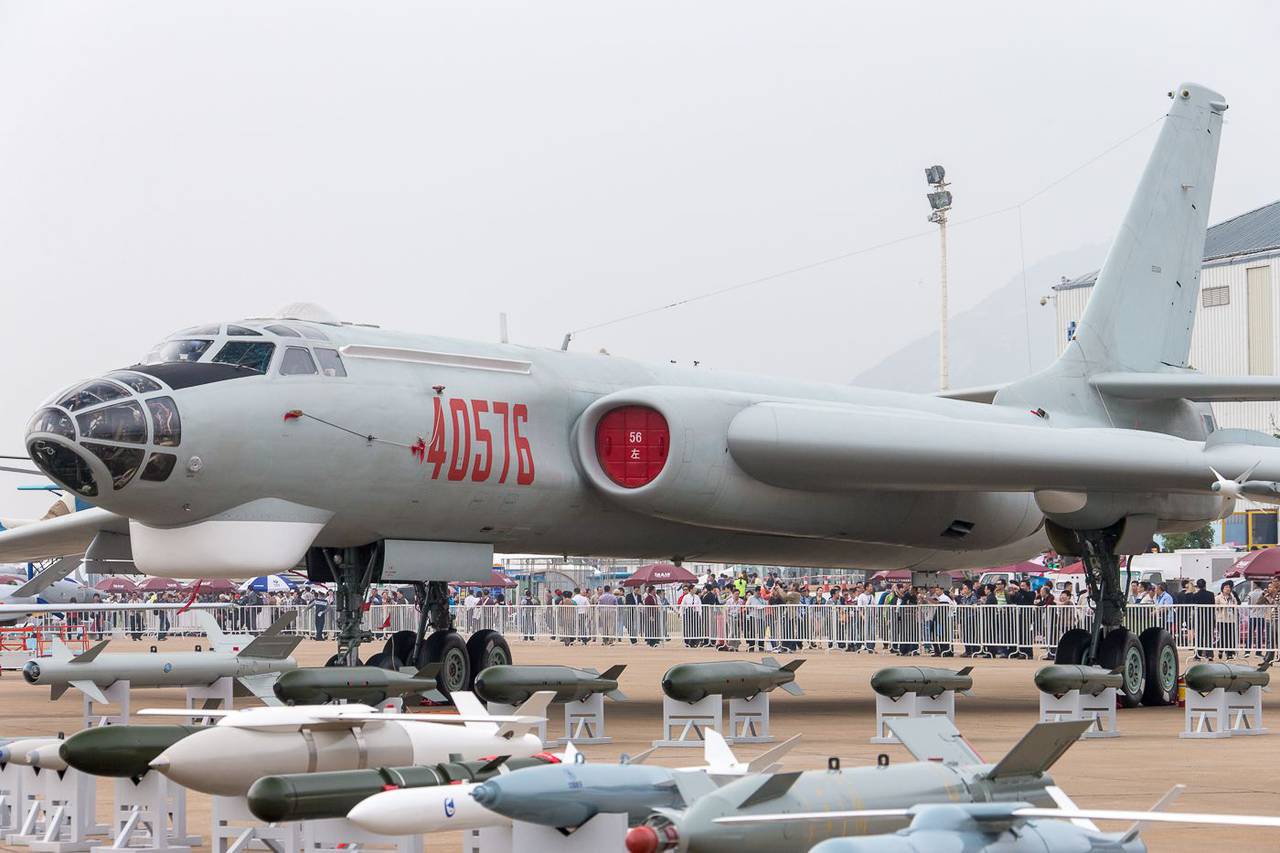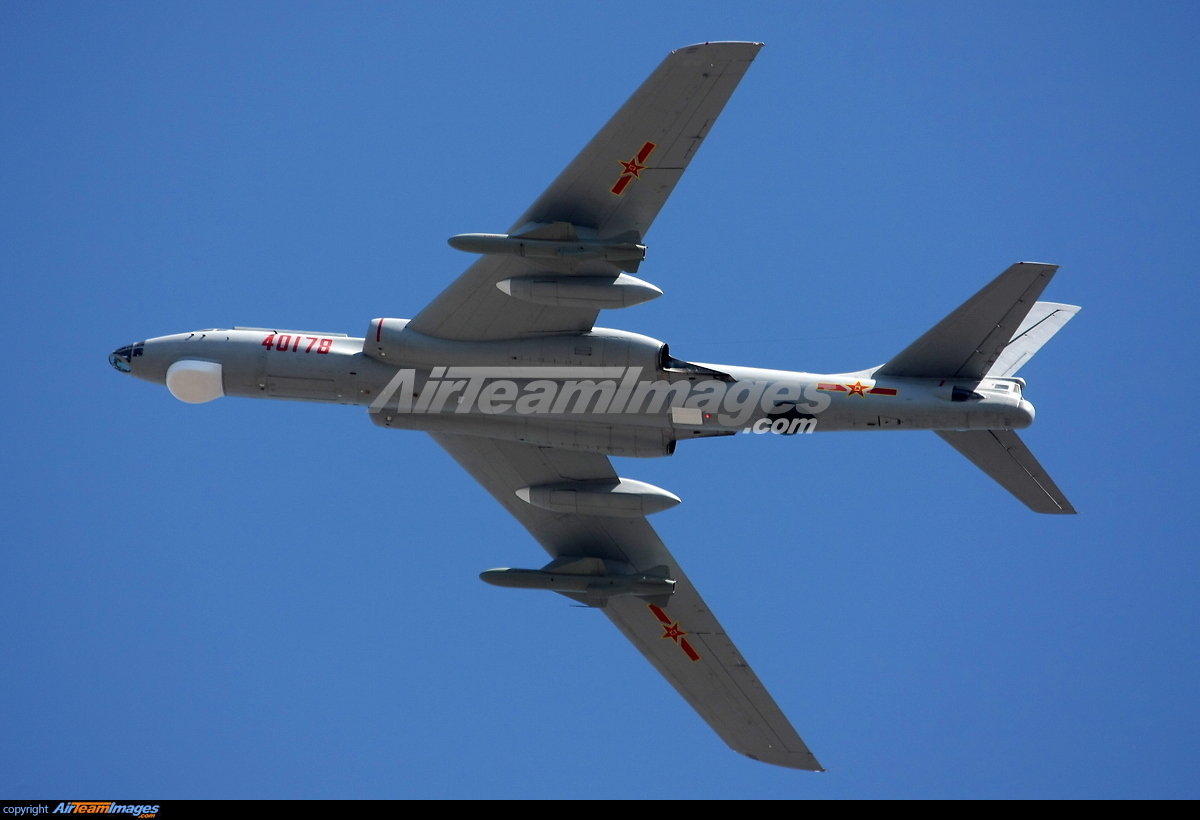Xian H 6 - As the border conflict between India and China enters its second winter, the Line of Actual Control (LAC) is seeing increased activity on both sides. There are reports of troop buildups, deployment of heavy weapons, upgrades to military infrastructure and warnings sent to each other through exercises.
Chinese air defense systems, tanks, helicopters, fighter jets and other sophisticated weapons are deployed in "high altitude locations." There is no breakthrough in sight, the conflict, which originated mainly in western Ladakh, now also engulfs the Tawang region in the eastern sector of LAC.
Xian H 6

The Chinese Air Force has deployed at least one H-6K long-range bomber to the border with India, according to the South China Morning Post. Some analysts have interpreted the move as a warning to the Indian military in an attempt to prevent them from any "misadventures" during the Himalayan winter.
Xian H 6k Stratedgic Bomber (plastic Model) Color2
On PLA day 11 November, a bomb could be seen flying over a mountain range, indicating that it had been sent to the Himalayas. The video shows that the plane was armed with short-range KD-63 missiles instead of long-range CJ-20 cruise missiles.
The SCMP said that the bomber was deployed to Kashgar from Shaanxi last year and was transferred to the Western Theater Command, which includes the regions of Tibet and Xinjiang bordering India.
In this case, it would not come as a complete surprise to India. However, this may cause political consequences in the country because the threat to national security is a concern.
The fact that the H-6K strategic bomber, which is often compared to the American B-52, was shown on Chinese state television with a short-range missile is proof of nothing more than power projection by the PLA Air Force.
Xian H 6n: China's Carrier Killing Bomber
"Impregnable Dome": here is a new air defense system that can "shoot down" targets in all directions - See
India is beefing up its defenses along the border and has vowed to stand firm until the PLA leaves. It has deployed advanced weapons systems such as missiles, Air Defense Identification System (ADIS), battle tanks and helicopters.
Efforts were also made to procure weapons systems on an emergency route to strengthen its forces as the conflict, which had essentially reached a stalemate, refused to subside.

#WATCH | Indian Army Captain Sariya Abbasi updates the L-70 AA guns deployed on the frontline along the Line of Actual Control near Tawang district in Arunachal Pradesh pic.twitter.com/FFlRaigmoz — ANI (@ANI) October 20, 2021
Xian H 6
The Chinese deployment of the H-K6 bombers can be seen as psychological warfare against India. Macau military observer Anthony Wong Tong said the apparent deployment was "definitely a warning to India". Wong said.
This observation could mean that a strategic short-range missile-carrying bomber means a power projection limited to the site itself, and ideally not designed to show any threat deep inside.
Another thing is that the range of a missile becomes insignificant if very important objects are fired from the border, potentially triggering a full-scale war.
According to Zhou Chenming, a researcher at Beijing's Yuan Wang Institute of Military Science and Technology, there were no long-range photos of the CJ-20 in the CCTV footage. "This is a cautious warning from the PLA. The CCTV [report] deliberately did not include footage of the H-6K and the powerful CJ-20," Zhou said.
Xian H 6h (40171) Aircraft Pictures & Photos
If China were to take any aggressive military steps, it would be below the threshold of conflict. Therefore, the "use" of the bombs is out of the question. In addition, the H-6 class bombers have been stationed in Chengdu for a long time, so this should not come as a surprise.
The PLA is only trying to demonstrate its strength and does not appear to be a threat to India.
Kondapalli, a professor of sinology at the Center for East Asian Studies at Jawaharlal Nehru University in New Delhi, told EurAsian Times.

The Chinese Xian H-6K is a licensed version of the Russian Tupolev Tu-16 bomber built for the PLA Air Force. It was designed for both single and large-scale attacks and has the ability to deliver a nuclear strike.
Xian H 6n
The Xian H-6 is an upgraded version of the medium-range H-6 bomber and is considered a strategic bomber. According to Military Today, it can attack US carrier battle groups and priority targets in Asia.
H-6K bombers were actively used by the PLA to demonstrate their capabilities to opponents. Dozens of Chinese PLA H6-K jets conducted a nine-hour bombing exercise after US President Joe Biden and Japanese Prime Minister Yoshihide Suga expressed grave concern over Taiwan, as Eurasian Times previously reported.
More recently, in the middle of the Biden-Xi talks on November 16, the PLA revealed that it had conducted a series of "high-intensity" night exercises earlier this month with the Xian H-6 strategic bomber in its Southern Theater Command.
H-6K bombers have also repeatedly entered Taiwan's airspace since the beginning of the new wave of Chinese aggression.
New Photos Point To Chinese Bomber Being Able To Carry Huge Anti Ship Ballistic Missiles
This bomber carries cruise missiles launched under its wings, and about 6 hard missile points. The Xian H-6K bomber can carry the CJ-10A and its successor, the CJ-20 cruise missile. It was specifically designed to counter US Navy aircraft carrier groups.
Russia shot down 5 Ukrainian fighter jets, including Su-27 and MiG-29, in just 24 hours - Russian Defense Ministry
An irreplaceable advantage! US Navy F/A-18 Super Hornets and F-35 Stealth Jets get new Indo-Pacific facility to 'strike' China.
_large.jpg)
India may upgrade Armenian Su-30 fighter jets and train its own fighter pilots as it battles Azerbaijan, Turkey and Pakistan has created a strike advantage that is of great concern to Washington DC.
Quick Preview Picture Of Deka's Upcoming Ai Aircraft, The Xian H 6
H-6K at the China Airshow in Zhuhai in 2018. Models K, J and N are equipped with modernized engines and other important improvements.
The H-6 family is mentioned 33 times in the 173-page report. China's very popular new Chengdu J-20 stealth fighter fell far behind in second place with 11 mentions. Perhaps Beijing's most capable fighter, the Su-35, received only two mentions. The report covers China's planned stealth bomb in just a few short lines, and says no more than that it will be ready sometime in the mid-2020s.
American concerns about H-6 are justified. Although ultimately based on the outdated Soviet Tu-16, which was decommissioned by Russia in the early 1990s, the H-6 will be the mainstay of China's bomber force well into the 2030s. Even with the arrival of the new stealth bomber, tentatively designated the H-20, the venerable H-6 will remain the main platform.
The H-6 has gone through a complex series of iterations and improvements since entering Chinese service in the 1960s. Newer variants such as the H-6K and H-6N operated by the People's Liberation Army Air Force (PLA) and the H-6J operated by the People's Liberation Army Air Force (PLANAF) are more effective than older aircraft. Tu-16. They also mark a significant improvement over previous generations of the H-6 platform such as the G, H and M. Another updated variant, the HD-6, is considered a dedicated electronic warfare aircraft.
Xian H 6 Addon
In addition to the large load of long-range weapons, the K, J and N variants are equipped with two Soloviev D-30 turbofans, which are more efficient than the WP-8 turbofans that powered the previous H-6s. There is also speculation that the type was powered by a locally developed WS-18 turbofan engine that would eventually power the Xian Y-20 strategic vehicle.
With larger air intakes to accommodate the upgraded power plant, the K, J and N variants dispense with the glass nose of the original Tu-16 and H-6, replacing it with a solid nose for a passive electronically scanned array or potentially a. active array radar and electronic optics. It also has an electro-optical / infrared turret under the fuselage. Where the tail of the shooter, which was in previous versions, gives way to a completely closed tail.
"In October 2019, China signaled the return of the airborne portion of its nuclear triad after the PLA publicly unveiled the H-6N as the first nuclear-capable air-to-air bomber," the US Department of Defense said in a report.

The nuclear triad is considered the pillar of nuclear deterrence. This triad of land-based ICBMs, submarine-launched ballistic missiles and long-range nuclear bombs is seen as a guarantee of a strong retaliatory strike capability.
China Russia Joint Patrol Highlighted Limitations Of Chinese Bombers
In addition to the filling probe, the H-6N has a special concavity under the fuselage. The Pentagon says it can be used to carry an anti-ship ballistic missile (ASBM) or an unmanned aerial vehicle.
"The H-6N can carry the new Chinese air-launched ballistic missile (ALBM), which is a derivative of the DF-21D ASBM, which means it can launch these weapons from outside China's borders, preventing access and blocking the area (A2/AD), against the US carrier battle group 809 miles (1,500 km) away and well beyond the range of coverage of carrier-based aircraft such as the [Lockheed Martin] F-35C,” Malcolm Davies, senior defense strategy and capabilities analyst at the Australian Strategic Policy Institute says.
Another weapon he believes the H-6 carries is the short-range CM-401 ARV. This weapon
Sig p365 tulster holster, sig p365 iwb holster, sig holsters p365, sig p365 sas holster, sig p365 xl holster, sig p365 hybrid holster, appendix holster sig p365, safariland holster sig p365, sig p365 belt holster, sig p365 holster, sig p365 purse holster, sig sauer p365 holster

0 Comments